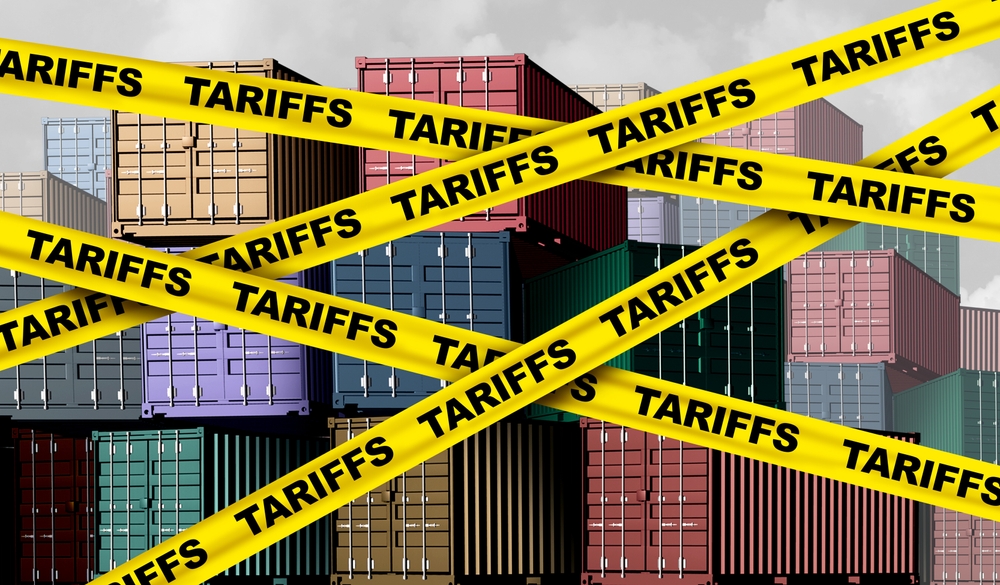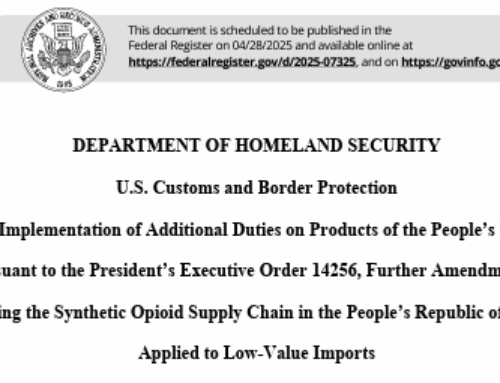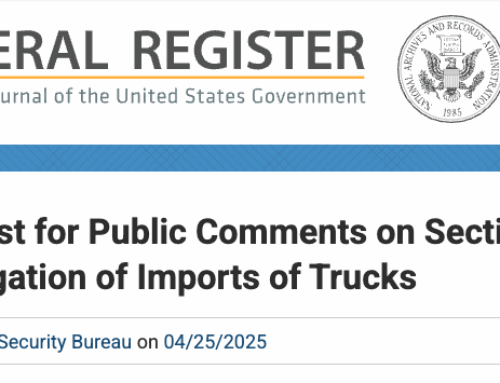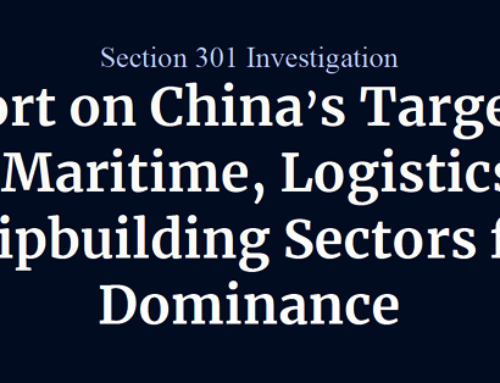China has announced that a 34% tariff will be imposed on all U.S.-origin imports effective April 10, 2025. The decision, issued by the State Council Tariff Commission, follows the United States’ enactment of reciprocal tariffs on Chinese exports earlier this month. The added duties will apply in addition to existing tariffs across all commodity categories and represent a significant expansion of bilateral trade restrictions.
Shipments from the U.S. that depart prior to 12:01 a.m. China Standard Time on April 10 and arrive before May 13 are exempt from the new tariff. Bonded, tax reduction, and exemption policies remain in place, but the 34% surcharge is not eligible for exemption under current rules.
CHINA IMPLEMENTS EXPORT CONTROLS, ENTITY RESTRICTIONS
In conjunction with the new import tariffs, China has expanded its export control and trade compliance measures:
- Export licenses are now required for shipments of certain medium and heavy rare earth elements.
- 16 U.S. entities have been added to China’s Export Control List, restricting access to dual-use items.
- 11 U.S.-based firms were placed on the Unreliable Entity List, affecting their ability to engage in import/export activities in China.
These controls may impact the availability and lead times of materials used in electronics, clean energy, aerospace, and defense applications.
WHITE HOUSE RESPONDS: POTENTIAL U.S. ESCALATION AND TRADE TALKS SUSPENSION
On April 7, President Donald Trump issued statement via social media indicating that, unless China reverses its 34% tariff by April 8, the United States may impose an additional 50% tariff on Chinese goods starting April 9. The statement also noted that trade discussions with China would be suspended, while talks with other trading partners may be prioritized.
U.S. TARIFF COUNTERMEASURES: EUROPEAN UNION TO VOTE, CANADA EXPANDS RESPONSE
The European Union is moving toward its own trade response, with a vote on proposed retaliatory tariffs scheduled for April 9, 2025. Specific measures have not yet been announced, but EU leaders have indicated that any action will aim to protect key industries while leaving the door open for future negotiation. Additional details are expected in the coming days.
Canada has implemented several rounds of countermeasures in response to U.S. tariffs on automobiles, energy exports, and industrial goods. These include reciprocal tariffs on a wide range of U.S. products and proposed duties targeting non-CUSMA compliant vehicle components. Canadian officials have also signaled the development of policy frameworks to support domestic manufacturing and incentivize long-term investment in strategic sectors.
Stay up-to-date on freight news with Green’s Weekly Freight Market Update by following us on LinkedIn. For continuous updates, make sure to check out our website at greenworldwide.com.






